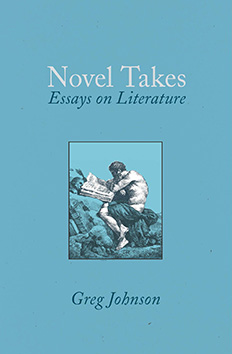White Fight: Donald Trump Is Leading the Republican Charge to Preserve a Shrinking White Majority
Jamelle Bouie, Slate, July 5, 2018
Under the Trump administration, even naturalized citizens are now a target. The government agency that oversees immigration applications is hiring lawyers and immigration officers to review cases of immigrants suspected of obtaining citizenship through fake identities or other false information on their applications. Cases would be referred to the Department of Justice, where offenders could lose their citizenship or legal status.
{snip}
The small scale of this effort belies its significance. As a country, the United States makes few distinctions between naturalized citizens and their native-born counterparts. The naturalization process, which includes long-term residents with deep ties to the U.S., is assumed to be permanent. This new task force on denaturalization throws that permanence into question, bringing suspicion on anyone who received their citizenship through means other than birth.
There’s no guarantee this effort will stay confined to cases of cheating and fraud. The Trump administration has shown, in its drive to criminalize asylum-seekers, that the existing processes for seeking legal status can effectively be criminalized at any time. The president’s willingness to demonize all immigrants as intruders on American soil offers little comfort.
The move to denaturalize some citizens is just the latest in a larger drive by Republicans — led by key figures in the Trump White House — to preserve a white majority in American politics. At the state level, Republican lawmakers take steps to protect GOP districts, dampen voter turnout, and otherwise hinder participation, which raises the chances of Republican victories for Congress and the White House. In turn, Republicans in Washington nominate and confirm judges who give voter suppression the cover of law, giving incentive to new efforts at restriction and disenfranchisement. What Donald Trump brings is an explicit effort to write nonwhite immigrants out of the body politic, removing as many as possible and presenting the rest as a suspect class.
{snip} But there’s a difference between a nation’s population and its electorate — its share of people who can exercise the full rights and privileges of citizenship. Republicans realize this, and are trying — at every level of government — to reverse-engineer a white electorate large enough to secure their own power, and along with it, the existing hierarchy of class and race.
The move to denaturalize some citizens is just the latest in a larger drive by Republicans to preserve a white majority in American politics.
Donald Trump is a major part of this story. But as with all things Trump, it would be wrong to treat this project as unique to him and his administration. Attorney General Jeff Sessions and White House adviser Stephen Miller, as well as former advisers Stephen Bannon and Michael Anton, are unusually driven in their commitment to a racial vision of the American state: Sessions once praised the nativist 1924 Immigration Act, and Anton, writing under a pseudonym, once warned that the “ceaseless importation of Third World foreigners” would mean a “less traditionally American” electorate. But they are also largely in line with a broader Republican politics that’s become reliant on the revanchist anger of a white minority. {snip}
What came out of those victories was just as important as what produced them: an immediate effort to shrink the electorate by disadvantaging black and brown voters. In 2011, Republicans in Alabama, Kansas, South Carolina, Tennessee, Texas, and Wisconsin introduced and signed strict voter identification laws. Republicans in Ohio ended same-day voter registration, while those in Florida and Texas took steps to restrict voter registration drives. Georgia (along with Florida and Ohio) reduced early voting, and Iowa (along with Florida) made it harder for former felons to vote. {snip}
In 2013, a conservative majority on the U.S Supreme Court — each member nominated by a Republican president — struck down a key provision of the Voting Rights Act, all but freeing conservative lawmakers to go even further in pursuit of voter restrictions. In the aftermath of that ruling, Shelby County v. Holder, GOP-controlled states like Wisconsin pushed forward with changes and restrictions that had a measurable effect on the electorate. In Milwaukee, for example, 41,000 fewer votes were cast in 2016 than in 2012, a change that can’t be explained by a shrinking voting-age population. Donald Trump won the state by fewer than 23,000 votes.
To compound their advantage, Republican lawmakers used their majorities for aggressive gerrymanders, packing Democratic voters into districts meant to dilute their electoral influence. In some states, this also means racial gerrymandering, to neutralize the influence of black and Latino voters.
These tactics amplify Republicans’ existing advantages. The party benefits from a structural bias toward rural counties and exurbs — where white Americans who support the GOP disproportionately live — and against urban centers and dense metropolitan areas. {snip}
In all of this, Donald Trump is less an instigator and more an accelerator. With strategic appeals to white racial prejudice, Trump took this well-distributed plurality of white voters and made it large enough to secure an Electoral College victory, taking the “minority rule” that already defines the federal legislature and extending it to the White House itself. {snip} Indeed, if Trump did anything unique, it was take the subtext of that engineering — we need to keep nonwhites from voting or otherwise limit their full participation — and made it explicit.
Trump’s administration has been aggressive in furthering this project. Shortly after his appointment as attorney general, Jeff Sessions reversed the Justice Department’s position in multiple voting rights lawsuits, putting the government on the side of voter suppression in Ohio and Texas. The administration has also pushed a citizenship question for the upcoming census, which critics say will suppress the number of immigrant respondents, worsening said malapportionment in the House of Representatives and the Electoral College as immigrant-heavy states lose out on seats and votes, their power distributed to white voters in rural states and counties.
{snip}
Trump and the Republican Party’s most enduring move against voting rights was the confirmation of Neil Gorsuch to the Supreme Court, strengthening the same conservative bloc that took an ax to the Voting Rights Act. In the court’s most recent term, Gorsuch voted to uphold voter purges in Ohio and racial gerrymandering in Texas, endorsing the view held by Justice Clarence Thomas that the Voting Rights Act allows lawmakers to dilute minority votes, all but rendering the law a dead letter. That Gorsuch voted to uphold Trump’s “travel ban” on select Muslim-majority countries, despite the president’s unambiguously prejudiced language against Muslim immigrants, is another sign that the conservative majority will not meaningfully challenge the White House on immigration restrictions.
{snip}
{snip} Many of the same political actors working to preserve a white political majority are also fighting a crusade against the welfare and regulatory state, or what’s left of it. Each fight depends on the other, as voting restrictions clear the board for government by entrenched interests.
{snip}

Jamelle Bouie















